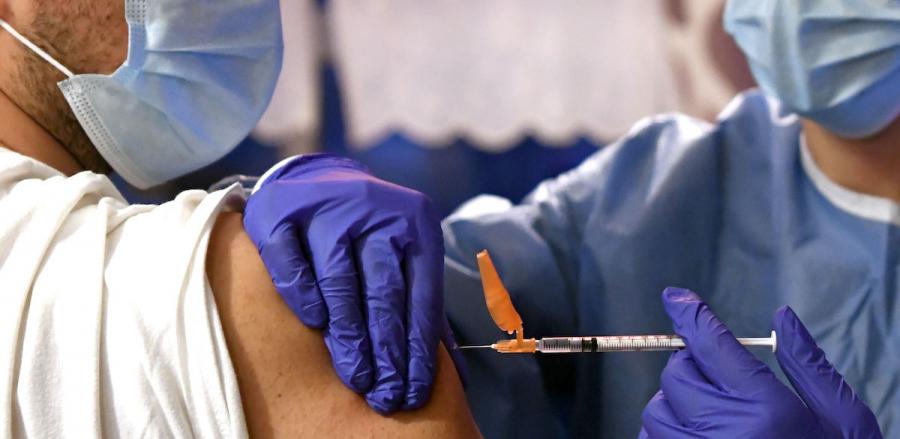
Prevention through the use of vaccines is an effective method in the fight against certain diseases and their eradication.
Vaccines are available and information about them is provided at the Health Surveillance Service. Every time a dose of any vaccine is administered, it is recorded in the SERGAS computerised vaccination history.
The vaccines administered are:
- Influenza vaccine.
- Tetanus-diphtheria vaccine.
- MMR vaccine (rubella, mumps and measles).
- Hepatitis A vaccine.
- Hepatitis B vaccine.
- Influenza is caused by a virus of the influenza virus genus that mainly affects the upper respiratory tract, causing a clinical picture with general symptoms that is benign and self-limiting, except in at-risk populations.
- The main source of infection is those who are ill with influenza, and during the first three days of the disease the possibility of contagion is at its highest. The virus is very sensitive to external agents, so the transmission mechanism is always direct.
- Climatic factors (low temperature, humidity) facilitate transmission by favouring the accumulation of people. The easy transmission of the virus is explained by its high concentration in oropharyngeal secretions and the low infectious dose required.
- The vaccination season is usually early autumn and is adapted to the official vaccination calendar.
Indications
It is especially recommended for the following risk groups:
- People suffering from chronic lung conditions: bronchitis, emphysema, asthma, bronchiectasis, tuberculosis, fibrosis and others.
- People suffering from chronic heart conditions: hypertensive and valvular heart disease and others.
- People suffering from chronic kidney conditions: nephritis, renal failure and others.
- People suffering from other chronic diseases: diabetes mellitus, lupus erythematosus, hepatitis and others.
- People on immunosuppressive therapy.
- People exposed to a high risk of infection for any reason: public assistance services, teachers, health workers, others.
- People over 65 years of age.
Influenza vaccination campaign
For more information, please refer to the SERGAS guidelines.
Tetanus is a disease caused by Clostridium tetani, which is a gram-positive, anaerobic bacillus. It can occur in vegetative or sporulated form, widely distributed, in the form of spores, in rubbish, manure, rusty metals and material contaminated with human and animal faeces.
Diphtheria is an acute bacterial disease most commonly located in the oropharyngeal region. The vaccine is included in the childhood immunisation calendar. It is now recommended to continue adult vaccinations in conjunction with the tetanus vaccine.
Indications
Tetanus vaccination is recommended for the whole population (children and adults). It is of particular interest for:
- Gardening services
- Farmers
- All people who have to do with the countryside or animals (teachers, laboratory staff...).
Rubella, measles and mumps are viral diseases that normally occur in childhood and are usually immunised in adults, but in some cases the person does not have antibodies to these diseases.
Indications
It is recommended for non-vaccinated adults or those who have not developed antibodies (immunity) despite being vaccinated. Prior to vaccination, a determination of the person's immune status is carried out by the Health Surveillance Service.
Hepatitis B is a disease caused by the hepatitis B virus (HBV) that is transmitted through blood and body fluids such as semen and vaginal fluid (and is therefore considered a sexually transmitted disease).
Hepatitis B is currently a major public health problem worldwide, due to the high prevalence of the disease in some areas and the potential for the development of severe chronic forms.
Indications
The hepatitis B vaccine is indicated for all persons at risk of contracting the disease.
As an occupational risk in the USC, hepatitis B vaccine is considered to be indicated for:
- People working in healthcare institutions exposed to contact with blood, and/or biological products.
- Professional staff in laboratories where samples of biological products are handled.
- Nursery school staff.
- Swimming pool lifeguards.
Hepatitis A is caused by the hepatitis A virus (HAV).
The virus is found in the faeces of infected people and is therefore spread by direct contact with infected people or by ingesting food or water contaminated with the virus.
Indications
It is recommended, in general, for all those who work in or travel to areas where hepatitis A is endemic, people who work with the elderly, etc.
From an occupational point of view, at USC, it is indicated in the case of:
- Laboratory workers where they may be exposed to the hepatitis A virus.
- Nursery school workers
- Researchers working with waste or contaminated water.
- Swimming pool lifeguards.
Health Surveillance Service
- Civil Servants' House
- Avenida das Ciencias, 7, 15782Santiago de Compostela
- 881 814 520
- vixilanciasaude [at] usc.es
Health Surveillance Service
- Edificio Administrativo Intercentros
- Rúa Bernardino Pardo Ouro, s/n. Campus Universitario, 27002Lugo
- 982 823 446
- 982 823 444